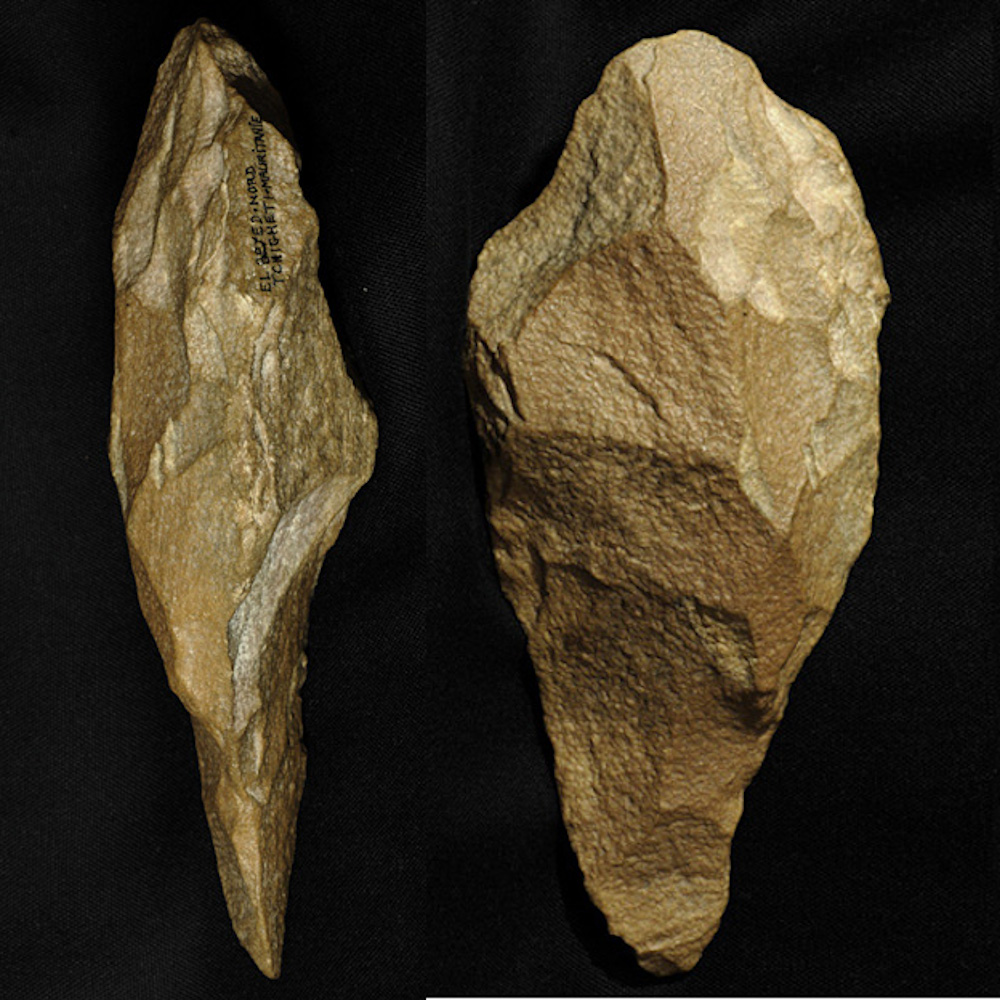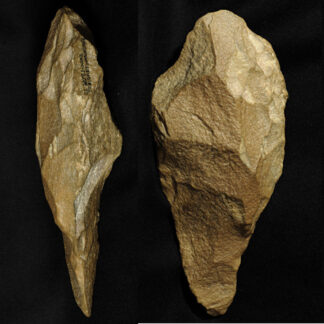Acheulean Hand Axe, Mauritania, Lower Paleolithic
Likely Homo Erectus – one million years ago
Acheulean hand axes are large flaked stone tools representing the oldest and longest-used stone tools made by human ancestors, primarily made by Homo Erectus from 1.5 million to 250,000 years ago. They were versatile and used for many tasks like digging, scraping, and chopping. Earlier examples had specific styles and designs possibly for different tasks. Later types were more symmetrical and uniform thought all are easily recognized as Acheulean industry.
This large 23cm 1kg Acheulean hand ax from Mauritania dates from roughly 1 million to 500,000 years ago based on its size and less-symmetrical style typical of earlier Acheulean tools. This example has a well-defined, slightly angled tip with a hand grasp designed to fit two hands with remarkable comfort and balance. Like many early examples, one face has a center pyramidal bump leaving only one way to grasp the tool comfortably. Held this way, the angled tip points slightly inward providing stronger strokes. Possibly one of the earliest examples of ergometric design from roughly a million years ago, considering that many examples show this same asymmetric geometry. This all becomes clear when you try holding it different ways.

